Following the feathers - counting capercaillie in the Cairngorms
01/07/2020 in Conservation
If you wander through the Scots pine forest of the Cairngorms National Park, you may well be lucky enough to witness the unmistakable sight and sound of a western capercaillie. Capercaillie are large woodland grouse that feed mainly on shoots and buds on the ground. Males, which are nearly twice as big as females, come together during the breeding season to form what is known as a lek. They raise their tail feathers and perform a clicking song to compete for females.
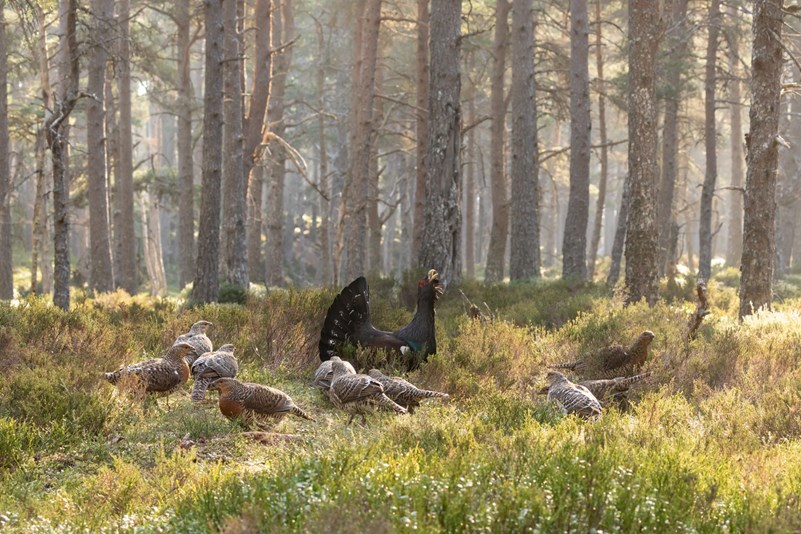
Mark Hamblin, Scotland The Big Picture
The UK’s only populations of capercaillie are in Scotland, and have suffered a 90% decline since the mid-1970s. This is not the first time that capercaillie have struggled in the UK, having been reintroduced in 1837 after they went extinct during the 18th century due to habitat loss and hunting. It's possible that there are now less than 1,000 capercaillie left in the UK and home for many of them is the Cairngorms National Park.
Thanks to the support of National Lottery players, the Cairngorms Capercaillie Project is working with local communities in the Cairngorms National Park on a variety of initiatives to help secure the long-term future of capercaillie in the UK. A technical piece of the puzzle going forward is to work on constantly improving estimates of the number of capercaillie so that it’s possible to understand population trends better and therefore whether conservation initiatives are successful. The RZSS WildGenes Lab has teamed up with the project, which is led by the Cairngorms National Park Authority (CNPA), to test if DNA methods can be useful to count capercaillie here in Scotland and understand more about the population’s genetic diversity and relatedness.
The first step of this endeavour is to test if feathers found on the ground are a suitable source of DNA. Collecting feathers would not only allow us to monitor populations without disturbing the birds but would also potentially be an easier way of collecting data whilst reducing the amount of field work required.
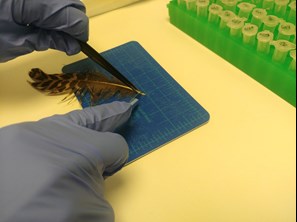
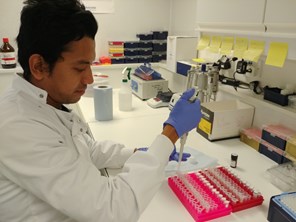
(left) Cutting a feather quill to extract DNA - (right) Jal (WildGenes Genomic Technician) extracting DNA from the feather samples
Here in the RZSS WildGenes Laboratory, we tested extracting DNA from more than 800 feathers which were collected by land managers, volunteers and field surveyors in 2019 following a call to action from the Cairngorms Capercaillie Project. Fresh feathers are a very promising source of DNA. However, feathers lying on the forest floor have often been exposed to moisture and the sun’s UV light for long periods, which can damage or destroy the DNA and make it impossible to work with.
We cannot always rely entirely on the naked eye to know which species the feathers belong to, due to variation in feather type, condition, size and age. This is definitely an area where genetic methods can help! We can look for genetic ‘barcodes’ in the DNA to identify which species the feather came from. In the survey we have just analysed, most feathers did turn out to be capercaillie. Interestingly, feathers from golden eagles, buzzards, ring-necked pheasants, black grouse and other species were also collected during the survey.
For all the feathers that came from capercaillie, we then used a DNA method to identify the sex of the birds. This will provide valuable additional information about the male:female ratio of capercaillie in the wild which can be useful for population management and conservation actions. But this is just the first step of the lab work. The next step will be to look at generating individual genetic profiles from each capercaillie feather, information which can then be used to count the number of birds and understand more about the genetic diversity and relatedness of the capercaillie in the Cairngorms National Park.
Until next time,
Jean-Marc and Jal
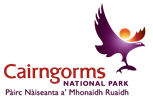

Featured Articles

An update from the Budongo Forest
19/04/2024 in Conservation

Edinburgh Zoo named best zoo in Scotland
15/04/2024 in Edinburgh Zoo

























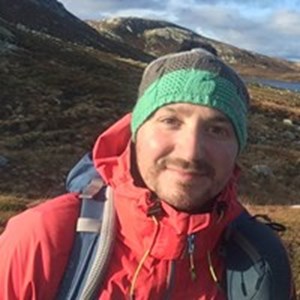
Follow EZ